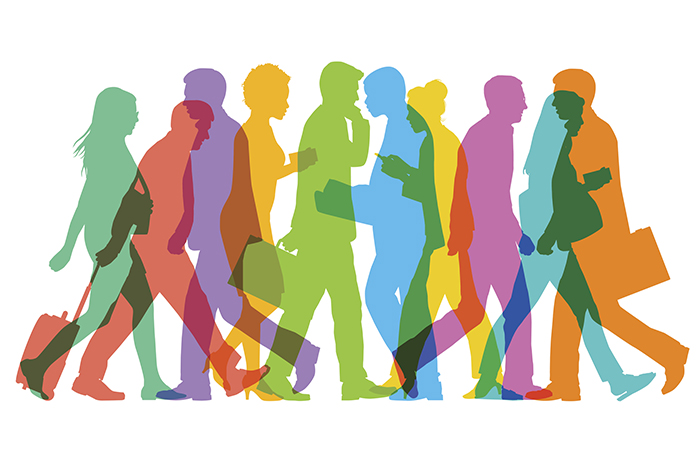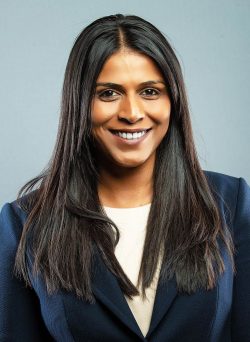Why diversity fails (and what HR can do about it)

As the world became increasingly globalised, the boundaries between countries and cultures has also started to congeal and blur. Working in isolation is no longer a viable option for businesses. In fact, for a business to thrive — no, survive — differences between its teams and employees cannot be seen as obstacles, but should be celebrated as real assets to the company’s success.
After all, no man (or woman) is an island. We are all in this together for the long haul.
And employers are certainly catching on as well. According to a report by Willis Towers Watson, “55% of employers have taken steps to communicate their diversity and inclusion initiatives as they pertain to workplace culture and policies”, and “nearly three-quarters indicate they intend to do so over the next three years”.
Employers are enthusiastic about diversity because the numbers check out. For example, the Boston Consulting Group has found that companies with more diverse management teams have 19% higher revenues due to innovation. This is particularly relevant for technology companies and startups, where innovation, arguably more than anything else, powers growth. Furthermore, according to the 2018 Hays Asia Diversity and Inclusion report, improved company culture, leadership, and greater innovation were the top three benefits of diversity identified by survey respondents.
Even on a personal level, I’ve seen firsthand how diversity can be good for business. Having worked in India, the Philippines, South Africa, the UK, Singapore, and now the US, I see diversity in action everywhere I go. Perhaps the most obvious benefit is the tenure we get from employees. Attrition is a big problem in our industry, so it’s important that people feel like they are part of a family — and diversity and inclusion can help cultivate that, engaging employees at a level that other initiatives fail at.
It’s in the execution
It is clear by now that diversity is not just a checkbox on an annual report, but an integral part of a successful business operation. However, where companies falter is when it is time to walk the talk and put policies into action.
Here are a few common barriers to diversity that I have observed at various workplaces:
- Failure to communicate the benefits of diversity
Even if everyone at the management level is on board with diversity, if the benefits are not communicated — or communicated well — to the entire company, then even the best policies will die before leaving the boardroom. Instead of seeing diversity as a boon for the company, when not communicated properly, these policies will instead come across as chores coming from the top — and diversity fatigue becomes a real problem.
This is part of the reason why, at Everise, we make it a point to regularly hold forums, or what we call E-Talks, where leaders share their insights on industry trends and changes — including diversity and inclusion trends. The purpose of these open discussions is to bridge the gap between employers and employees, thus getting everybody on the same page.
Furthermore, communication must be constant. After communicating the diversity policies to the organisation at large, we make it a point to check back every once in a while, to see how employees feel about the execution, and to see if there are areas that we can improve on.
At Everise, we used to seek feedback once a year, but now we are trying to do it every other quarter. That way, we can very quickly identify any underlying issues and address them before they get too serious.
- Conscious, subconscious, and unconscious biases
Biases – we all have them. No matter how objective we try to be, most people have prejudices or, at the very least, preconceived ideas about other people, even if they don’t necessarily come from malicious places. This is particularly relevant for hiring managers and HR teams. The evidence across industries is overwhelming that unconscious bias seeps into decisions that affect most areas of the employee life-cycle, including recruitment, promotions and even outcomes in disciplinary procedures.
As the Chief People Officer, I am acutely aware that it is impossible to completely eliminate biases. My job, then, is to minimise their impact as much as possible. For example, at Everise, we have employees from all over the world: we have presence in Asia, North America, Central America, and also Europe.
My advice to all interviewers is to focus on the candidate’s skills and knowledge rather than demographic characteristics. My own method of interviewing is rather unstructured and doesn’t focus on a standard set of questions – whereby the candidate’s experience and expertise unfold organically through conversation, and give me a good understanding of their values, work ethics and culture fit.
We also make sure that the decision to hire somebody is not made by a single individual, but by the leadership group that will eventually work with the selected candidate. This way, we can instil checks and balances during the hiring process and avoid prejudices or favouritism.
- Failure to integrate differences
Diversity isn’t about forcing people from different backgrounds to work together and expecting them to play nice. Rather, it is about managing and integrating their varied lifestyles, beliefs, and needs into your business operations.
At Everise, we set specific and measurable goals that promote diversity. By encouraging candid conversations about inclusion into our culture, we ensure that our values are representative of the efforts to meet those goals.
My own personal experiences in various countries have taught me of how the written and spoken word can be misinterpreted, leading to misundertandings. Communicating in a culturally appropriate manner ensures we respect and accept cultural differences. A basic level of understanding is necessary to engage in appropriate greetings and physical contact as well, which can be a tricky area. I’ve noticed that even humour is culture specific – many things that pass for humor in one culture can be seen as offensive in another. Whilst integrating different work groups, it’s important to remind them of these very basic differences and how to accept them.
The fact is that there will always be differences between people. We are the sum total of our experiences, after all. Instead of sweeping them under the rug, we need to recognise these differences and find common ground as much as possible.
- No top-down approach
For diversity and inclusion to work, employees cannot be the ones leading the charge — that’s the leader’s job. Leaders need to be on the frontlines when it comes to diversity, and they need to be the ones driving cultural change. This is no easy task, but so many diversity policies fall apart, despite the best intentions, because of a lack of action from the top. As for Everise, we are fortunate that our CEO, Sudhir Agarwal is “all in” when it comes to diversity and inclusion. He is all about performance and meritocracy, and he practises what he preaches – encouraging all of us to do the same.
A continuing journey
However, that is not to say that we have it all figured out. To me, diversity and inclusion is a journey, not a destination. I don’t believe that there will ever be a point whereby my job is done and dusted. While we have a very healthy gender ratio across all levels, we set new goals every quarter to ensure we don’t lose focus on the larger goal of being a company that nurtures talent.
Speaking of diversity goals, Everise currently has about 12,000 employees across more than 20 different cultures, speaking over 20 different languages. With such a diverse workforce, we want to continue our employee engagement programmes in 2019 and beyond.
Currently, we have a global exchange programme which opens up international career paths for our employees. We are also looking to launch a mentorship programme, which pairs promising employees with executive leaders from different departments and geographies to encourage a diversity of ideas.
At the end of the day, meritocracy still powers the entire recruitment and promotion processes. We still want the best of the best to work for our company. What we want to do, however, is to make sure that everyone, no matter the age, race, gender, sexual orientation or religion, has equal opportunities.
About the author
Sheena Ponnappan, is the Chief People Officer of Everise, a Singapore-based global experience company, providing end-to-end customer service solutions.




